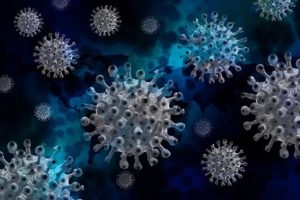Vaccine Priorities: Children or Underserved Populations?
Vaccine Priorities: Children or Underserved Populations?
May 24, 2021
 In the setting of still somewhat limited vaccine supplies and deliveries, a current question is what the most effective priority is among those who are still not vaccinated. What will have the most effective dampening effect on the pandemic? There are several considerations. To what extent could vaccination prevent transmission chains? And what would be the effect on global disease burden or death? On the one hand, there is obviously interest in protecting one’s own citizens. On the other hand, in addition to humanitarian reasons, protecting people in other countries where infections are out of any control could be more protective and effective on ending this ongoing pandemic, in part by preventing the emergence and spread of highly infectious, transmissible, and/or immune escape variants, and by reducing the global public health burden. This issue is further complicated by acceptance of vaccines for their children among parents.
In the setting of still somewhat limited vaccine supplies and deliveries, a current question is what the most effective priority is among those who are still not vaccinated. What will have the most effective dampening effect on the pandemic? There are several considerations. To what extent could vaccination prevent transmission chains? And what would be the effect on global disease burden or death? On the one hand, there is obviously interest in protecting one’s own citizens. On the other hand, in addition to humanitarian reasons, protecting people in other countries where infections are out of any control could be more protective and effective on ending this ongoing pandemic, in part by preventing the emergence and spread of highly infectious, transmissible, and/or immune escape variants, and by reducing the global public health burden. This issue is further complicated by acceptance of vaccines for their children among parents.
SARS-CoV-2 in Children
Infected children with SARS-CoV-2 appear to have an asymptomatic or mild disease severity. But on very rare occasions, some may develop multi-system inflammatory syndrome in children (MIS-C). As we have discussed in the previous Perspective, child to child transmission in schools is rare although the viral RNA loads of children appear to be equivalent to those of adults; yet viral RNA loads may not always correlate with the titers of infectious virus. Transmission from children in the community may be more common than in the school setting. Early trial results have shown that 12–15-year-olds who received two standard doses of the Pfizer–BioNTech vaccine developed substantially higher levels of virus-blocking antibodies than did 16–25-year-olds in earlier trials. Recently, the FDA has authorized the Pfizer vaccine for 12-15 year olds(1), a decision that was facilitated by a reported 100% efficacy in this cohort in phase 3 trials conducted by University of Maryland School of Medicine and Johns Hopkins Bloomberg School of Public Health (2). There is still no authorization for children younger than 12, although small dose-ranging trials are underway with this cohort for the Moderna vaccine at University of Maryland and the Pfizer vaccine at Johns Hopkins. There are not yet data for this age cohort, although it seems likely the vaccines will prove effective.
As we have discussed in the previous Perspective, child to child transmission in schools is rare although the viral RNA loads of children appear to be equivalent to those of adults; yet viral RNA loads may not always correlate with the titers of infectious virus.
The COVAX initiative organized by WHO would at best cover around 30% of the populations worldwide at the end of 2021, if a huge effort from many rich countries would arise, and continents such as Africa and South –East Asia have so far only received a handful of doses.
Since recent studies have shown evidence of preventing transmission of SARS-CoV-2 by Pfizer vaccine, vaccinating young adults and children will definitely show a benefit in preventing viral transmission in the community.
 Underserved Populations
Underserved Populations
On the other hand, there are countries in which vaccination efforts are weak and in which the pandemic is raging out of control, including India, Brazil, and Nepal. The COVAX initiative organized by WHO would at best cover around 30% of the populations worldwide at the end of 2021, if a huge effort from many rich countries would arise, and continents such as Africa and South –East Asia have so far only received a handful of doses. These situations, fueled in part by fast-spreading variants (see previous GVN Perspectives on the variants: 1, 2). and have caused public health crisis and have a high risk of keep generating troublesome variants. The collaborative efforts for vaccine equity have been requested for the humanity and for efficiently ending this pandemic. Further these efforts would help prevent economic collapse in the affected countries and would tend to preserve world order. These are arguments for providing vaccines and technical help by developing within these countries’ local vaccine production capacity; beyond, it is debated whether the immediate waiver of intellectual property protection for COVID-19 vaccines would provide rapid solutions.
Conclusion
Expanding vaccination campaign to adolescents has been already started in the U.S and will be soon implemented in several European Countries. The efficacy of the vaccination of older population, has led to now focus more on the viral transmission and hospitalization of younger people. Since recent studies have shown evidence of preventing transmission of SARS-CoV-2 by Pfizer vaccine, vaccinating young adults and children will definitely show a benefit in preventing viral transmission in the community. Yet as more people get vaccinated to return to normal life, it will be crucial to fuel the vaccination in low- and middle-income countries.
References:
- J. H. Tanne, Covid-19: FDA authorises Pfizer vaccine for children 12-15. BMJ 373, n1204 (2021).
- E. Mahase, Covid-19: Pfizer reports 100% vaccine efficacy in children aged 12 to 15. BMJ 373, n881 (2021).
